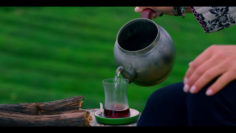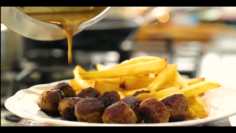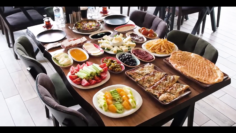Baklava
Baklava is an ancient Turkish dessert, and the word is derived from “baklağu” or “baklağı.”
When we examine the history of baklava, it refers to the layered bread made by Turkic communities in Central Asia using an “oklağu”, which is the rolling pin we know today as “oklava”.
The oldest Ottoman record regarding baklava is found in the Topkapı Palace kitchen books dating back to the period of Sultan Mehmet the Conqueror in 1473. According to these records, baklava was made in the palace. However, it is known that baklava had a place in our oral tradition even earlier, for example, in the tales of Nasreddin Hodja.
Just as it is today, baklava was a special dessert in the past. In many sources, it is seen that baklava was served on special occasions such as weddings, engagements, and henna nights.
Moreover, in the middle of Ramadan, by the Sultan’s order, one tray of baklava was distributed for every ten Janissaries and celebrations would be held. This tradition was called the “Baklava Procession” and continued until the mid-1700s.
Although baklava is most famously associated with Gaziantep, it is made in various forms across Türkiye. The identification of pistachios with this region has made pistachio baklava famous with this region.
However, it is hard to say that baklava is made with only this ingredient. Depending on where you go in Türkiye, you can enjoy delicious varieties of baklava. Just look at what goes into it: pistachios, walnuts, hazelnuts, peanuts, almonds…













